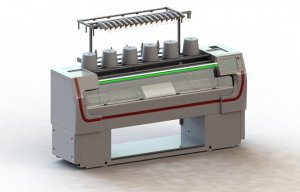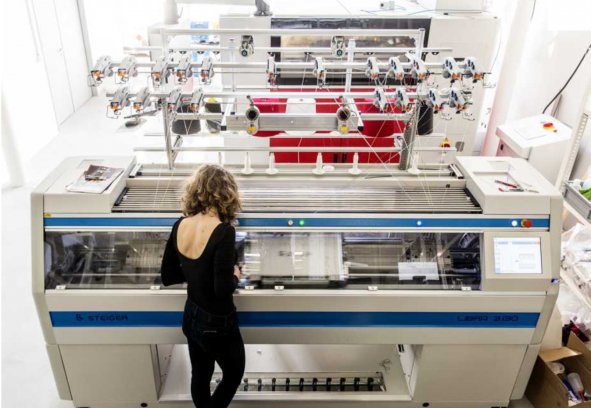
The sky’s the limit for Steiger’s new Vega 3.130
The new technology is now being used to create a five-tonne concrete structure for an exhibition in Mexico City.

31st October 2018
Innovation in Textiles
|
Zurich
Researchers at ETH Zurich have 3D-knitted a structure on a computerised flat knitting machine that serves as the primary shaping element for curved concrete shells. The new technology is now being used to create a five-tonne concrete structure for an exhibition in Mexico City.
The heart of the four-metre-tall curved concrete shell is knitted - the structure’s formwork is a knitted textile supported by a steel cable-net. The prototype KnitCandela is thought to be the first time that this technology is being used on an architectural scale. The structure is a tribute to Spanish-Mexican architect Felix Candela (1910–1997) and a collaboration with Zaha Hadid Architects Computation and Design Group (ZHCODE), and Architecture Extrapolated (R-Ex).
Photograph: Lex Reiter
55-kilogram formwork for 5 tonnes of concrete
The technology developed at ETH Zurich involves taking a digitally generated pattern and using an advanced Steiger LIBRA 1.130 flat knitting machine to produce the shuttering of the formwork for the shell structure - in 36 hours, the machine knitted a fully shaped, double-layered 3D fabric consisting of four long strips.

Business intelligence for the fibre, textiles and apparel industries: technologies, innovations, markets, investments, trade policy, sourcing, strategy...
Find out more